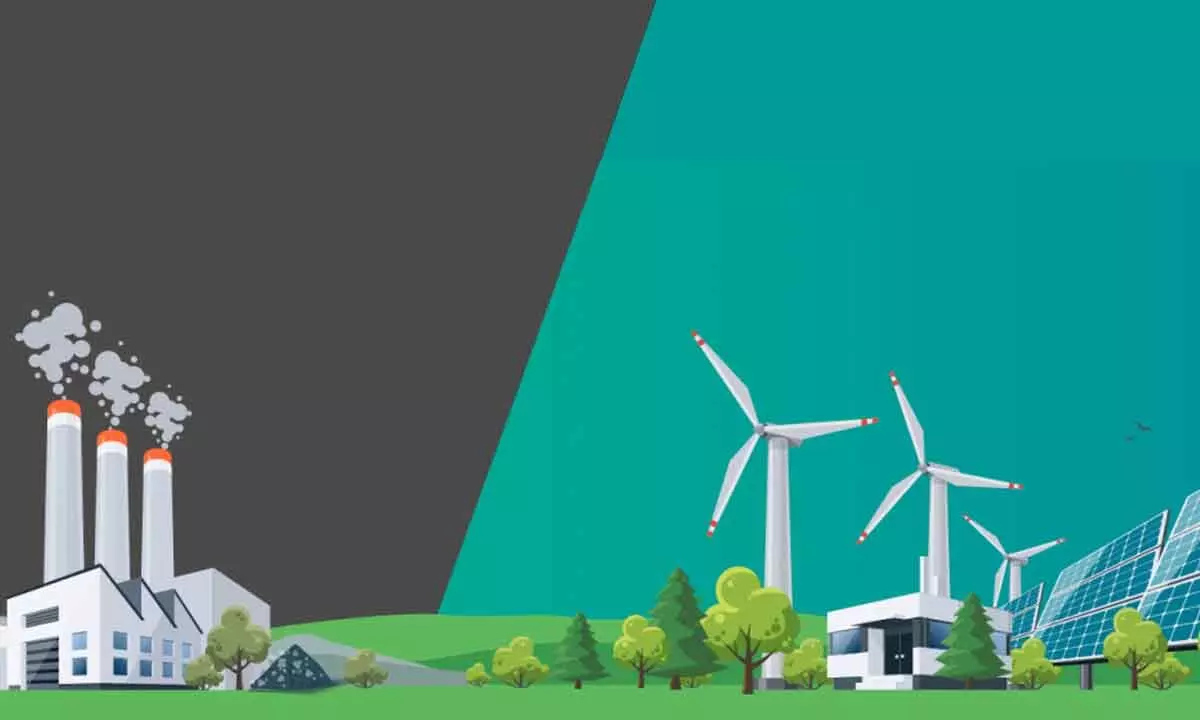Global renewables should be tripled and energy efficiency doubled by 2030
India and China experienced robust growth in electricity demand in 2023
image for illustrative purpose

Low-emissions sources, which will reduce the role of fossil fuels in producing electricity globally, are forecast to account for almost half of the world’s electricity generation by 2026, up from 39% in 2023.
Electricity is central to the functioning of modern societies and economies – and its importance is only growing as technologies that run on electricity, such as electric vehicles and heat pumps, become increasingly popular. Power generation is currently the largest source of carbon dioxide (CO2) emissions in the world, while at the same time it is also the sector leading the transition to net zero emissions through the rapid expansion of renewable energy sources such as solar and wind power.
Ensuring that consumers have a secure and affordable access to electricity while also reducing global carbon dioxide (CO2) emissions remain the core challenges of the energy transition.
The world’s demand for electricity grew by 2.2% in 2023, less than the 2.4% growth observed in 2022. While China, India and numerous countries in Southeast Asia experienced robust growth in electricity demand in 2023, advanced economies posted substantial declines due to a lacklustre macroeconomic environment and high inflation, which reduced manufacturing and industrial output.
Global electricity demand is expected to rise at a faster rate over the next three years, growing by an average of 3.4% annually through 2026.
The gains will be driven by an improving economic outlook, which will contribute to faster electricity demand growth both in advanced and emerging economies.
Electricity consumption from data centres, artificial intelligence (AI) and cryptocurrency sector could double by 2026. Data centres are significant drivers of growth in electricity demand across regions.
Renewables are set to provide more than one-third of total electricity generation globally by early 2025, overtaking coal. The share of renewables in electricity generation is forecast to rise from 30% in 2023 to 37% in 2026, with the growth largely supported by the expansion of the ever cheaper solar PV. Through this period, renewables are set to more than offset demand growth in advanced economies such as the United States and the European Union, displacing fossil-fired supply. At the same time, in China, the rapid expansion of renewable energy sources is expected to meet all additional electricity demand, though the weather and the extent to which the country’s demand growth eases remain key sources of uncertainty for the outlook.
The strong expansion in renewable power capacity must also be accompanied by accelerated investment in grids and system flexibility to ensure its smooth integration.
The report finds that an investment of $ eight trillion is needed for new renewables and $ four trillion for grid and storage infrastructure for tripling global renewable energy capacity.
According to the International Energy Agency (IEA), tripling the global renewable energy capacity and doubling the energy efficiency rate by 2030 are critical to limiting the average global temperature rise to 1.5 degrees Celsius.
Record-breaking electricity generation from low-emissions sources – which includes nuclear and renewables such as solar, wind and hydro – is set to cover all global demand growth over the next three years.
Low-emissions sources, which will reduce the role of fossil fuels in producing electricity globally, are forecast to account for almost half of the world’s electricity generation by 2026, up from 39% in 2023.
Asia remains the main driver of growth in nuclear power, with the region’s share of global nuclear generation forecast to reach 30% in 2026. Asia is set to surpass North America as the region with the largest installed nuclear capacity by the end of 2026, with a large number of plants currently under construction expected to be completed by then. More than half of the new reactors expected to become operational during the outlook period are in China and India.
Global CO2 emissions from electricity generation are expected to fall by more than 2% in 2024 after a one per cent increase in 2023. This is set to be followed by small declines in 2025 and 2026.
The strong growth in coal-fired power generation in 2023 – especially in India and China amid reduced hydropower output – was responsible for the rise in the global electricity sector’s CO2 emissions. As clean electricity supply continues to expand rapidly, the share of fossil fuels in global generation is forecast to decline from 61% in 2023 to 54% in 2026, falling below 60% for the first time in IEA records dating back to 1971.
While extreme weather conditions, economic shocks or changes in government policies could lead to a temporary rise in emissions in individual years, the broader decline in power sector emissions is expected to persist as renewables and nuclear power capacity continue to expand and displace the fossil-fired generation.

